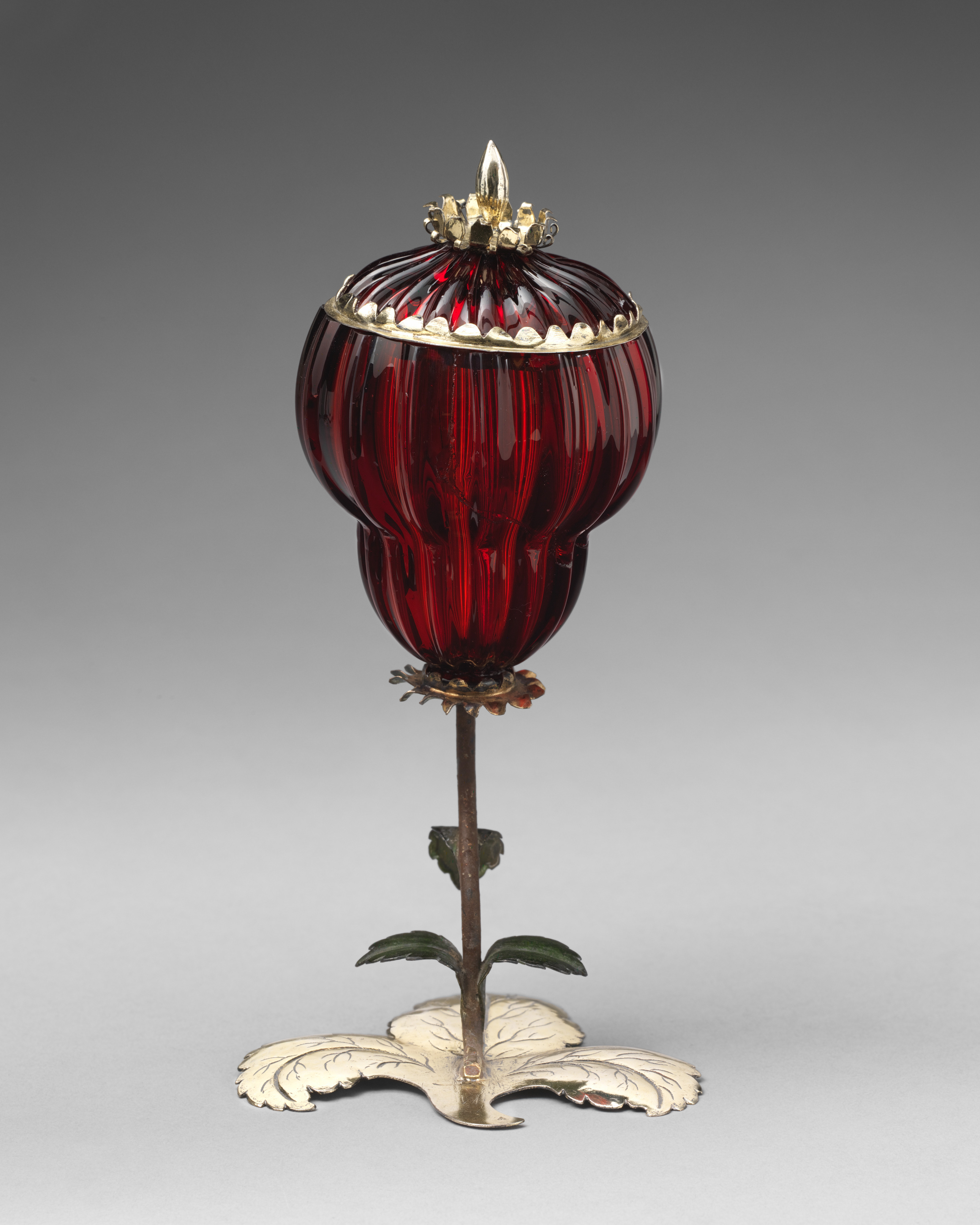Standing cup with cover
Mounts by Matthäus Baur II
Although red glass had been produced for stained glass in Northern Europe since the Middle Ages, its use had not extended to vessel glass. It was not until the German chemist Johann Kunckel experimented in the later seventeenth century that a true ruby red glass was made suitable for vessel glass, at Potsdam, under the Duke of Brandenburg. The secret of the formula was very soon well-known; a workshop in Freising made a specialty of making novelties in this material and sending them to Augsburg to be mounted in silver gilt. The family of Matthäus Baur and his sons were specialists in this. The coloring factor in ruby glass was gold in the glass mass, and this was an ingredient that made red glass expensive and exclusive. Gold was also thought to be anti-toxic and to protect from poison anyone who drank from it.
A very similar goblet (now in the Danish Royal collection), in the form of an apple, was given to Queen Charlotte-Amalie by her husband Christian V at Christmas 1695; it also bears the mark of Matthäus Baur II.
Due to rights restrictions, this image cannot be enlarged, viewed at full screen, or downloaded.
This artwork is meant to be viewed from right to left. Scroll left to view more.



